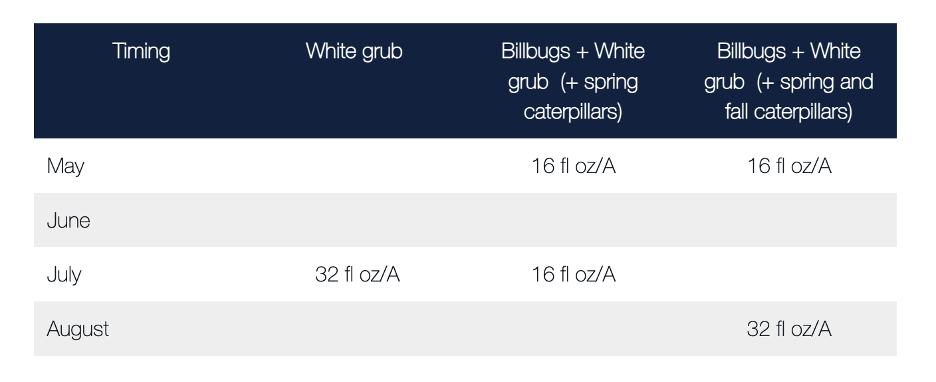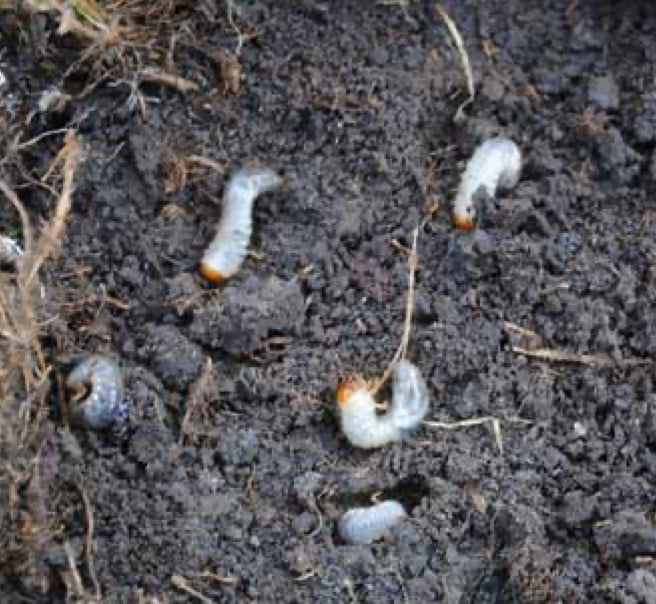Insects in Lawn Turf: Now Is the Time to Start Making Your White Grub Applications to Maximize Control
Now is the time to start making your white grub applications to maximize control. Here’s how:
- A game-changing grub control solution from Envu: Tetrino® insecticide provides excellent control of all white grub species in research trials and real-world use the last two seasons. It also shows excellent extended activity against other important pests including billbugs, chinch bugs and caterpillars like sod webworm, cutworms and fall armyworms.
- Timing is everything: Regardless of what insecticide you use, best practice is to start applications for grubs when you see the first adult beetles in flight (usually early July to mid-August) since damaging larvae are observed one to three weeks later. Plus, most damage comes from animals feeding on larger larvae later in summer or fall, so it makes the most sense to apply when adults are present to insure control well into the fall.
- Apply the right rate:
- A full rate of Tetrino insecticide (32 oz/acre) is recommended to ensure season-long grub control. This can be applied as a single application during peak adult flight (mid-June through mid-August) or as a split application (16 oz/acre + 16 oz/acre) in late spring and again in mid-to-late summer to target a wider range of pests throughout the season. Tetrino insecticide will provide six to eight weeks of residual caterpillar control depending on rate.
- With imidacloprid, it is critical the full label rate (0.4 lbs ai/A per year) is applied regardless of formulation. Be careful with some combination of a Merit® insecticide/fertilizer products because their high label rate equates to less than 0.4 lbs ai/A. Here are the proper rates:
- Merit® 75 WSP insecticide = 5 x 1.6 oz packet/A per year
- Merit® 0.5 G insecticide = 80 lbs/A per year
- Merit® 2F insecticide = 1.6 pt/A per year
- 0.2% Merit insecticide on Fert = 200 lbs/A per year
- Water it in:
- For Merit insecticides, irrigation or rainfall (≥ 0.5 inch) should ideally occur within 24 hours after application to move the active ingredient targeting grubs through the thatch into the soil profile (where the grubs are feeding).
- For Tetrino insecticide, irrigation or rainfall (0.125-0.25 inch) should ideally occur within 24 hours after application.
- If targeting surface-feeding insects like caterpillars, post-application irrigation is not required.
- Minimize thatch: Thatch layers more than 0.5 inch can severely limit insecticide movement to the area of grub feeding.
- Other insects problematic? Tetrino insecticide's flexibility allows for multiple applications at a variety of rates depending on the insects that are most important.
The timing and rate of Tetrino insecticide are based on primary insect pests, and exact timing depends on local conditions.
Need more info? Read and follow the label recommendations and contact your Envu area sales manager if you need assistance.
White grub control is largely weather dependent, so optimizing management strategy is critical (Envu).


